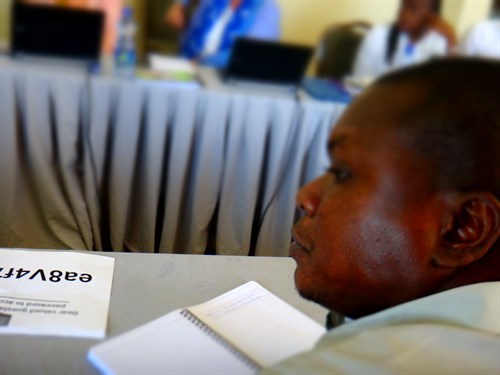
Kate Hawkins, 25 November 2014
Main messages
- In Malawi the Quality Improvement Cycle will focus on strengthening supervision
- The two districts we are working in currently use two different models of supervision: the cluster system and the block system
- A three-prong checklist will be used to evaluate supervision
- REACH Trust will conduct an economic evaluation based on the assumption that strengthened supervision will increase motivation, which will increase referral
- Improving supervision could lead to an increase in Senior Health Surveillance Assistants adopting the model
REACHOUT countries are beginning their Quality Improvement Cycles. This update provides a little more information on the type of issues REACH Trust in Malawi will be covering.
As agreed in a meeting with key stakeholders in Malawi, REACH Trust will be working on maternal, neonatal and child health. The focus of the Quality Improvement Cycle is on strengthening supervision in order to improve the performance of Health Surveillance Assistants.
To do this REACH Trust will adapt the supervision manual prepared by the REACHOUT Consortium and create a checklist for supervision. Training will be given to supervisors at the district, cluster and health facility levels. Each district has chosen eight health facilities for the Quality Improvement Cycles. The team have developed a 30 point supervision checklist based on community based maternal and newborn health, integrated community case management and the core functions of Health Surveillance Assistants. The Health Surveillance Assistants will have monthly group supervision meetings and senior Health Surveillance Assistants and Environmental Health Officers will have quarterly supervision meetings at district level.
Health Surveillance Assistants report to health facilities, usually health centres. The number of Health Surveillance Assistants per health facility can range from five to forty. In block supervision, practiced in Salima district, the Health Surveillance Assistants are split into groups of four and they have meetings which are documented and this is communicated to their supervisor. It is a form of peer supervision. The supervisor based at a health centre consolidates all information from the blocks and sends to the district and the individual reports are just used as back up. In cluster supervision followed in Mchinji district, the Assistant Environmental Health Officer is in charge of a cluster, which is a combination of two to three or four health centres. .
As part of the Quality Improvement Cycles, research is being conducted and several tools are in use. Besides a motivation questionnaire, a motivation topic guide has been put together in order to do in-depth interviews with at least six Health Surveillance Assistants in each of the districts. The referral topic guide will be used with Health Surveillance Assistants who run village clinics and women with children between 0 and 5 years of age who were once referred by particular Health Surveillance Assistants. REACH Trust have also developed a topic guide for focus group discussions with community members. This analysis will be augmented by data gathered through a programme assessment tool.
REACH Trust will also do an economic evaluation of their intervention. Referral will be one of the areas that they will base this on. This is underpinned by the assumption that improved supervision supports motivation, which contributes to better Health Surveillance Assistant performance which will be reflected through improved referral.
There have been a variety of meetings with stakeholders. In Mchinji District they met with the District Executive Committee’s Sub-Committee on Health – which is important in the context of devolution. At the meeting different people presented their projects and got feedback. It means that every NGO working on health in the district knows all the background to the REACHOUT project and what the research plans are. REACH Trust held another meeting in Salima District with the District Health Officer where the project was discussed further. The most recent meeting brought together stakeholders from the two intervention districts and had senior participants from the Preventive Health Department of the Ministry of Health. At this meeting they revised the supervision manual based on feedback from the stakeholders and came up with a framework for the construction of the supervision checklist.
One challenge that the team face is that the Ministry of Health have conducted interviews to appoint Senior Health Surveillance Assistants to officially be supervisors for Health Surveillance Assistants. This has implications for the Quality Improvement Cycle because the team are going to train supervisors who may not be the ones successful in the interviews. It is hoped that when the Senior Health Surveillance Assistant position gets brought in officially, there will be 50 Senior Health Surveillance Assistants per district across the country
Recent news
- Reflections on a visit to the Pregnant Women's Forum in Howoleso Kebele, Southern Ethiopia, 21 November 2014
- REACH Ethiopia win the Kochon Award for their services to TB, 29 October 2014
- REACHOUT honourable mention in photo competition, 20 October 2014

This project is funded by the European Union.
